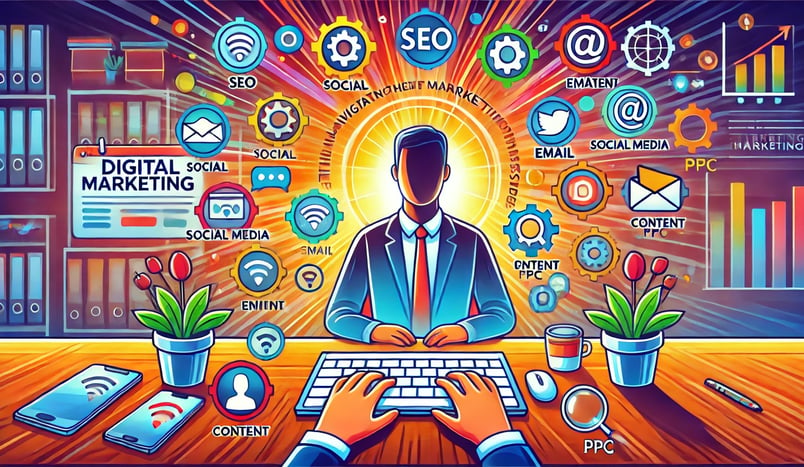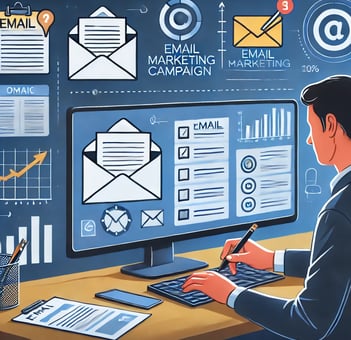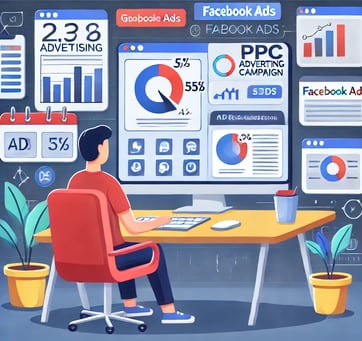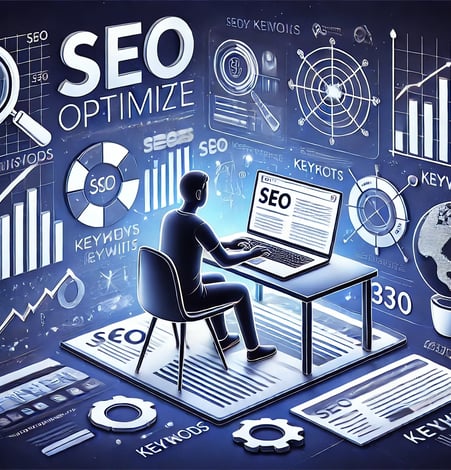Digital Marketing: Navigating the Modern Marketing Landscape
In today’s digital age, businesses must leverage digital marketing to reach their target audiences effectively. Digital marketing encompasses a variety of strategies and tools designed to promote products and services online. This blog will guide you through the essentials of digital marketing, helping you understand its importance, core components, and practical applications.
Majestic Blog Bliss
6/28/20244 min read


Understanding Digital Marketing
Digital marketing involves using digital channels such as search engines, social media, email, and websites to connect with potential and current customers. Unlike traditional marketing, digital marketing allows for targeted, measurable, and interactive engagement with audiences.


Key Components of Digital Marketing
1. Search Engine Optimization (SEO)
SEO is the practice of optimizing your website to rank higher in search engine results pages (SERPs), thereby increasing organic (non-paid) traffic. Key SEO tactics include keyword research, on-page optimization (title tags, meta descriptions, etc.), and building high-quality backlinks. By improving your website’s SEO, you enhance its visibility and attract more visitors who are actively searching for your products or services.








Practical Advice and Tips
1. Define Your Goals: Clearly define your digital marketing goals, such as increasing website traffic, generating leads, or boosting sales. This helps tailor your strategies and measure success effectively.
2. Understand Your Audience: Conduct thorough research to understand your target audience's preferences, behaviors, and pain points. This allows you to create content and campaigns that resonate with them.
3. Use Analytics: Utilize analytics tools to track the performance of your digital marketing efforts. Analyzing data helps you make informed decisions and optimize your strategies for better results.
4. Stay Updated: Digital marketing is constantly evolving. Stay updated with the latest trends, tools, and best practices to stay ahead of the competition.


2. Content Marketing
Content marketing focuses on creating valuable, relevant content to attract and retain a clearly defined audience. This can include blog posts, videos, infographics, and ebooks. Effective content marketing builds trust with your audience, encourages engagement, and drives conversions. By consistently providing helpful and informative content, you position your brand as an authority in your industry.
3. Social Media Marketing
Social media marketing involves using platforms like Facebook, Instagram, Twitter, and LinkedIn to promote products and engage with customers. It allows businesses to reach a wide audience, build brand awareness, and foster customer relationships. Social media marketing requires a consistent and strategic approach to manage effectively, including regular posting, interaction with followers, and the use of paid advertising to boost reach.
4. Email Marketing
Email marketing is a powerful tool for nurturing leads and maintaining customer relationships. It offers a high return on investment (ROI) by delivering personalized messages directly to your audience's inbox. Effective email campaigns include compelling subject lines, personalized content, and clear calls to action. By segmenting your email list and tailoring messages to different audience segments, you can improve engagement and drive conversions.
5. Pay-Per-Click (PPC) Advertising
PPC advertising allows businesses to display ads on search engines and other platforms, paying a fee each time the ad is clicked. Google Ads is the most popular PPC platform, enabling businesses to bid on keywords and display ads to users actively searching for related products or services. PPC advertising can deliver immediate results and provides detailed analytics to track performance and ROI.
Case Study: Successful Digital Marketing Campaign
One notable example is Nike’s "Dream Crazy" campaign featuring Colin Kaepernick. Nike utilized a mix of content marketing, social media marketing, and influencer partnerships to create a powerful and controversial campaign. The campaign went viral, generating significant media coverage, increasing brand awareness, and boosting sales.
Tools and Resources
1. SEO Tools: Google Analytics, SEM rush, Ahrefs
2. Content Marketing Platforms: WordPress, HubSpot, Medium
3. Social Media Management Tools: Hootsuite, Buffer, Sprout Social
4. Email Marketing Services: Mailchimp, Constant Contact, Sendinblue
5. PPC Advertising Platforms: Google Ads, Bing Ads, Facebook Ads
Common Mistakes to Avoid
1. Ignoring Mobile Optimization: Ensure your website and content are optimized for mobile devices to reach a broader audience.
2. Overlooking Analytics: Regularly review your analytics to understand what’s working and what isn’t. Data-driven decisions lead to better outcomes.
3. Lack of Consistency: Maintain a consistent brand voice and posting schedule across all digital channels to build trust and engagement.
Expert Insights
According to Neil Patel, a renowned digital marketing expert, "Digital marketing is all about delivering the right message to the right person at the right time." His advice emphasizes the importance of personalization and timing in digital marketing strategies.
Conclusion
Digital marketing is essential for businesses looking to thrive in the modern marketplace. By understanding and implementing key digital marketing components—SEO, content marketing, social media marketing, email marketing, and PPC advertising—you can effectively reach and engage your target audience. Stay informed, use analytics, and continuously refine your strategies to achieve your marketing goals.
Call to Action
Ready to elevate your digital marketing efforts? Start by assessing your current strategies and identifying areas for improvement. Explore the recommended tools and resources to enhance your campaigns. Share your experiences and success stories in the comments below—let’s learn and grow together in the digital marketing world!
